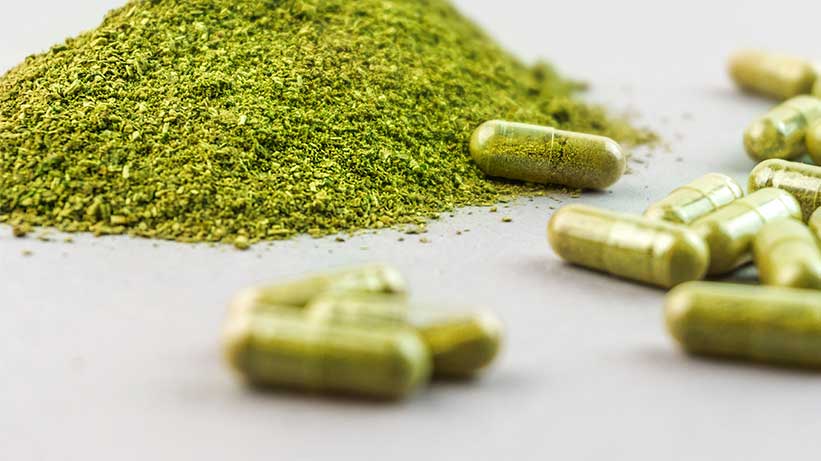Is Kratom Effective For Opioid Withdrawal?

Medically Reviewed By: Manish Mishra, MBBS
When trying to quit opioids, many people struggle with withdrawal symptoms such as anxiety, nausea, and insomnia. Some individuals claim you can treat these symptoms by taking an herbal substance called kratom. However, this claim has not been proven by scientific studies.

Numerous Ohio residents live with opioid addiction. This life-threatening disease causes physical dependence, which means your body can’t function normally without opioids. If you stop using them, you may experience withdrawal symptoms like anxiety, sweating, and nausea.
Some people claim that you can ease these symptoms by taking kratom. Here’s what you should know about kratom and its effectiveness in treating opioid withdrawal.
What Is Kratom?
Kratom is an herbal substance from the leaves of a tree called Mitragyna speciosa, which is native to Southeast Asia. People in this region have a long history of using kratom to treat pain, fatigue, and other health concerns. They usually chew the leaves or brew them in tea.
At low doses, kratom has stimulant effects, including increased energy and alertness. At high doses, it has depressant effects, including drowsiness, relaxation, and, in some cases, euphoria (intense joy). The substance can also decrease pain.
In recent years, kratom has been sold in the United States in various forms, such as tablets, capsules, powders, and teas. Sellers claim it can treat a variety of health issues, including symptoms of opioid withdrawal.
Is Kratom Effective For Opioid Withdrawal?
There has not been enough research to determine whether kratom is a safe and effective treatment for opioid withdrawal. However, researchers have identified a number of kratom-related risks that may outweigh the substance’s potential benefits.
Also, kratom has not been approved by the United States Food and Drug Administration (FDA).
That means there are no FDA guidelines for using the drug to treat opioid withdrawal.
In other words, people who use kratom must choose how much to use and how long to use it for. This may make them more likely to experience the drug’s risks.
Risks Of Kratom Use
People who use kratom may experience unpleasant side effects, overdose, and addiction.
Side Effects
The most common side effects of kratom include:
- dry mouth
- headache
- dizziness
- drowsiness
- chills
- nausea and vomiting
- muscle pain
- constipation
In some cases, the substance can also have more serious side effects, including:
- depression
- confusion
- delusions (holding beliefs that aren’t based in reality)
- hallucinations (seeing, hearing, or feeling things that aren’t there)
- trouble breathing
- liver damage
- seizures
- loss of consciousness
In addition, some kratom products contain harmful bacteria. In 2018, kratom was linked to an outbreak of salmonella infections.
Salmonella is a type of bacteria that can cause fever, nausea, diarrhea, and other unpleasant symptoms. In severe cases, it can have life-threatening complications.
Some kratom products also contain heavy metals. These substances can cause a variety of health problems, including skin lesions, kidney problems, and cancer.
Overdose
It’s possible to overdose on kratom, especially if you use it alongside other substances, such as alcohol or opioids. Symptoms of a kratom overdose may include:
- irritability
- drowsiness
- nausea
- increased heart rate
- high blood pressure
- seizures
- loss of consciousness
In rare cases, a kratom overdose can be fatal. According to the National Institute on Drug Abuse, 11 people died due to kratom exposure between 2011 and 2017. Eight of those people had also been exposed to other substances.
Addiction
Regular kratom use can cause symptoms of addiction, including physical dependence. That means that if you use the substance to treat opioid withdrawal symptoms, you may instead develop kratom withdrawal symptoms, which are often very similar. They may include:
- anxiety
- irritability
- sweating
- runny nose
- watery eyes
- nausea and vomiting
- diarrhea
- trouble sleeping
Along with physical dependence, other symptoms of kratom addiction may include:
- mood swings
- tolerance (needing increasingly larger or more frequent amounts of kratom to feel the desired effects)
- isolation
- loss of interest in activities once enjoyed
- trouble keeping up with responsibilities at work, school, or home
Like other addictions, kratom addiction can be treated with therapy, support groups, and other recovery-focused services.
Proven Ways To Treat Opioid Withdrawal
Since studies have not proven kratom as a safe, effective treatment for opioid withdrawal, it’s best to find other ways to manage your symptoms.
You can start by talking to your doctor. Most doctors will recommend that you slowly stop using opioids instead of quitting cold turkey. This strategy can reduce withdrawal symptoms because it gives your body more time to adjust to life without opioids.
Other ways to manage opioid withdrawal symptoms include:
- getting plenty of sleep
- eating healthy foods and drinking plenty of water
- avoiding alcohol
- getting a moderate amount of exercise
Medical Detox Program
Your doctor may also recommend that you attend a medically supervised detox program. In this program, doctors will closely monitor your health and comfort level as you get opioids out of your system.
After completing detox, you can transition to a medication-assisted treatment (MAT) program. There, doctors can treat your opioid withdrawal symptoms with FDA-approved medications like buprenorphine and methadone.
To learn about addiction treatment options, including detox and MAT, please reach out to Ohio Recovery Center.
- Drug Enforcement Administration — Drug Fact Sheet: Kratom https://www.dea.gov/sites/default/files/2020-06/Kratom-2020_0.pdf
- Food and Drug Administration — FDA Investigated Multistate Outbreak of Salmonella Infections Linked to Products Reported to Contain Kratom https://www.fda.gov/food/outbreaks-foodborne-illness/fda-investigated-multistate-outbreak-salmonella-infections-linked-products-reported-contain-kratom
- Journal of Psychoactive Drugs — Kratom Withdrawal: A Systematic Review with Case Series https://pubmed.ncbi.nlm.nih.gov/30614408/
- National Institute on Drug Abuse — Kratom https://nida.nih.gov/research-topics/kratom
- National Library of Medicine: MedlinePlus — Opiate and opioid withdrawal https://medlineplus.gov/ency/article/000949.htm

